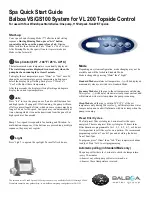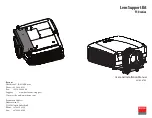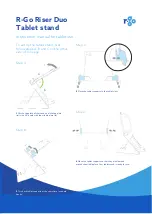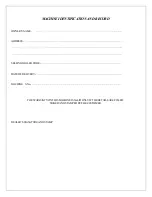
Setting Alarm Detection Parameters
FiberPatrol IDS Software Guide
Page 97
The first column in the Motion Rejection – Perpendicular panel is section number. A section is a
part of the sensing cable where Motion Rejection – Perpendicular can be applied to reject
undesirable perpendicular motion. The section numbering starts from 0 and the second section
number is 1, etc. Other Motion Rejection columns are explained below:
•
Enabled? (1 yes, 0 No):
Perpendicular motion rejection is applied to the section if a value of 1
is entered in this column. A value of 0 disables the section.
•
Start and End Locations:
The length of a section is defined by entering a start location and
an end location. The values for the start and end locations use the same unit that was chosen
in the System panel (meters or feet).
•
Disturbance Magnitude:
Disturbance signals above this threshold setting are analyzed to
determine a valid perpendicular motion event.
•
Disturbance Time:
An object moving perpendicular to the sensor cable typically generates a
number of disturbances for a limited time depending on the speed and length of the moving
object, as well as other factors related to the fence. The Disturbance Time is the period, in
seconds, in which a moving object is expected to create perpendicular disturbance events.
•
Disturbance Life, sec:
Disturbance Life sets the time limit that a disturbance is considered to
be part of a perpendicular motion event cluster. Once the disturbance life expires, that
disturbance does not affect nuisance alarm rejection.
•
Delay, sec:
Delay is the time, in seconds, for which Disturbance frames are delayed before
they are analyzed to determine an alarm condition. The Delay time is used to allow for a
pattern to develop so the nuisance alarm rejection algorithm can work effectively.
•
Motion Resolution:
For a new disturbance to be part of an existing perpendicular motion
event, its location must be within the Motion Resolution distance from the previous
disturbance.
•
Object Length:
For a cluster of disturbances to be classified as a valid moving object, the
distance traveled must be greater than the Object Length.
•
Lower Threshold 1, Lower Threshold 2, Lower Threshold 3:
The Disturbance Time is
divided into 3 equal time slots. Lower Threshold 1, Lower Threshold 2, and Lower Threshold 3
correspond to time slots 1, 2, and 3, respectively. The Disturbance signals must be higher than
the Lower Threshold 1, Lower Threshold 2, and Lower Threshold 3 settings to reject a
perpendicular motion event.
•
Upper Threshold 1 (%) and Upper Threshold 3 (%):
The Disturbance signals must be lower
than the Upper Threshold 1 and Upper Threshold 3 settings (time slots 1 and 3) to reject a
perpendicular motion event. Upper Threshold 1 and Upper Threshold 3 are defined as a
percentage of the maximum Disturbance signal in time slot 2.
Figure 113 Motion Rejection - Perpendicular panel















































